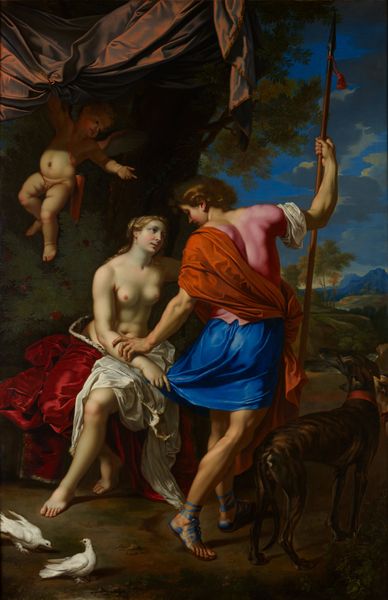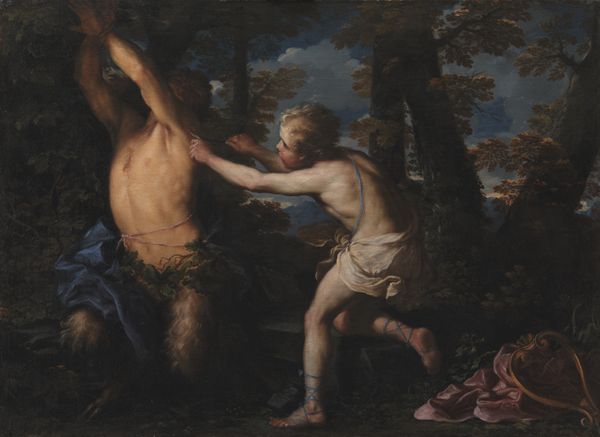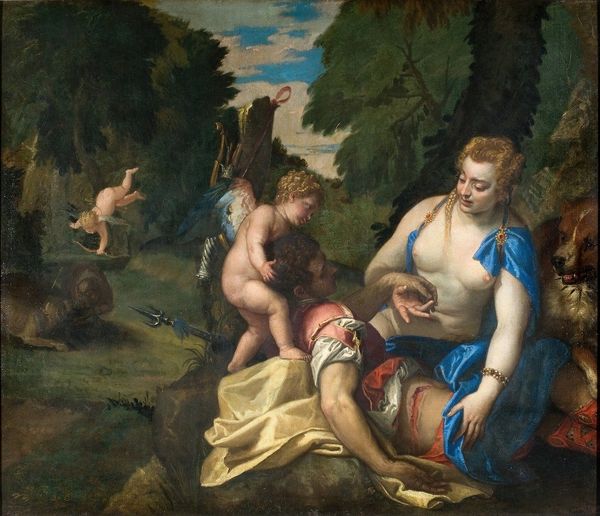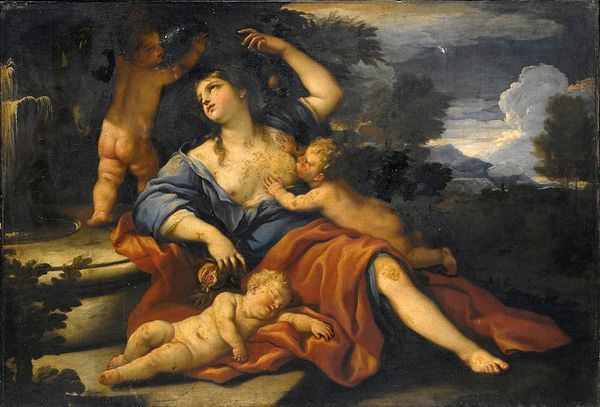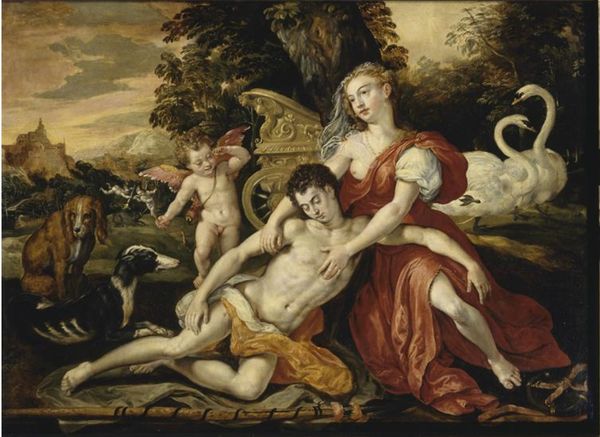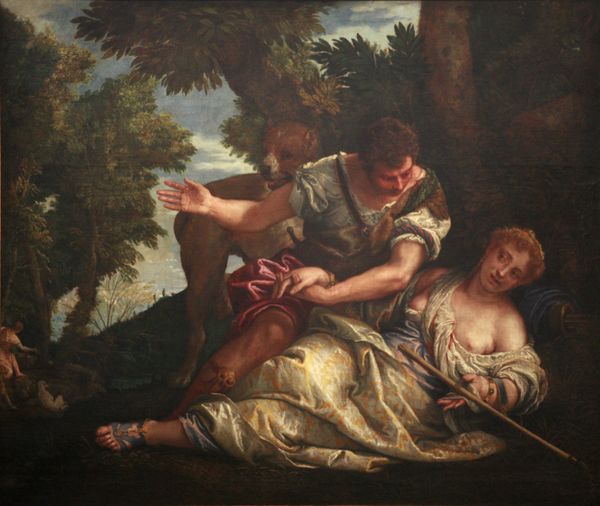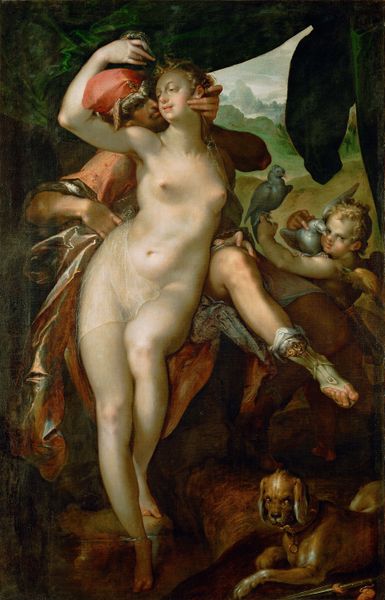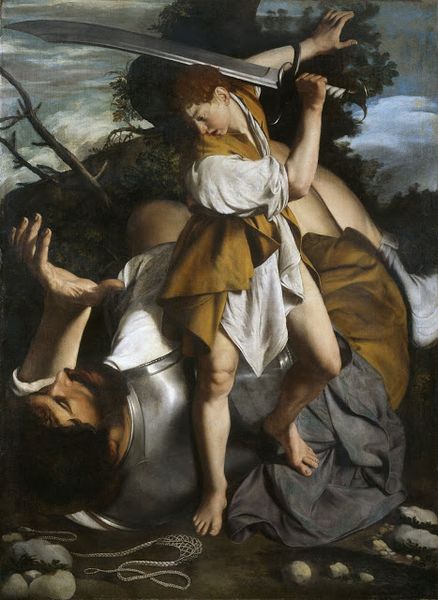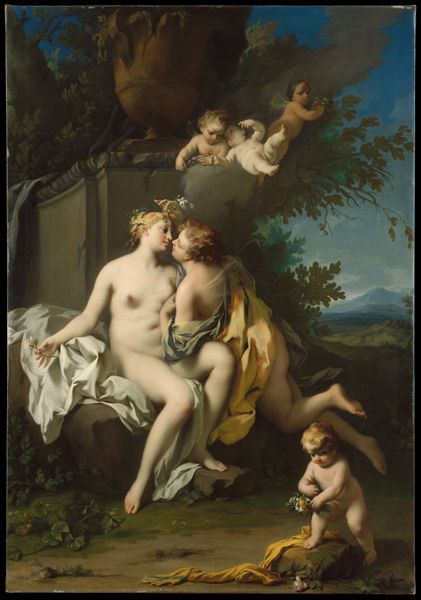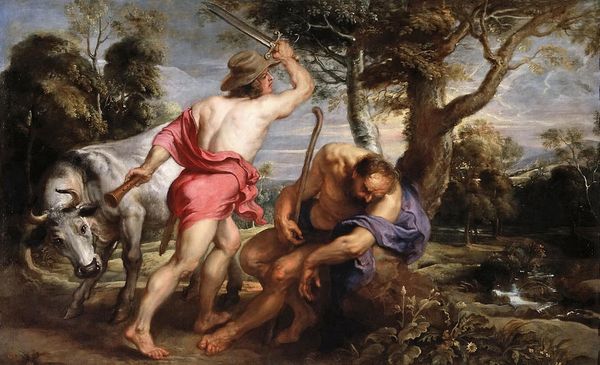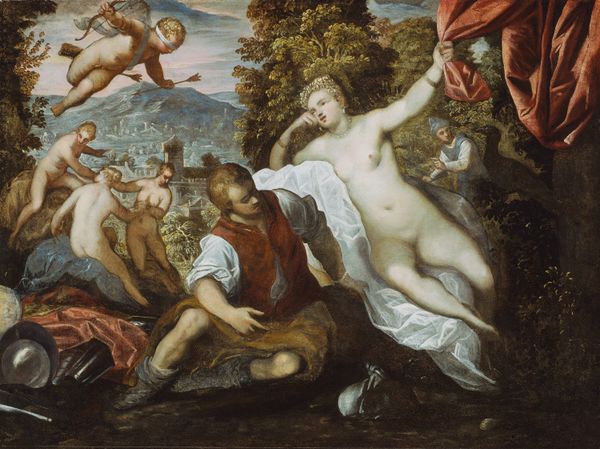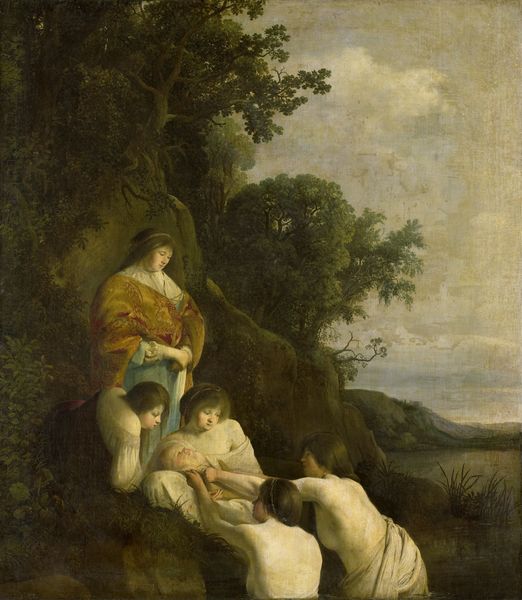
painting, oil-paint, wood
#
portrait
#
baroque
#
painting
#
oil-paint
#
figuration
#
oil painting
#
painting painterly
#
wood
#
history-painting
#
portrait art
Dimensions: 28.5 cm (height) x 35 cm (width) (Netto)
Curator: What a striking composition. The vulnerability, the pose, the light... Editor: Indeed. Let's take a closer look at this arresting oil painting. This piece, titled "St Sebastian", was created sometime between 1609 and 1667 by Cornelis van Poelenburch and is currently held here at the SMK. There's something immediately tragic and devotional in the way it's framed. Curator: The artist’s choices really emphasize that tension. Look at how the female figure— presumably tending to Saint Sebastian—is positioned adjacent to him. What sort of labour did they have in mind for this scene and who might it have appealed to? Was this designed to elicit a transaction or just emotional reaction, I wonder? Editor: It's primarily in the contrast of light and shadow. Observe how the soft curves of Sebastian's torso juxtapose against the rough bark of the tree to which he's bound. It's a formal game of binaries: pain and solace, darkness and light. Curator: I find it interesting to note the use of what looks like simple wood. This wasn’t commissioned, then? And is it an accurate portrayal of saintly suffering, or just one the painter found amenable to mass production in his workshop? I wonder if other versions of this existed, given Poelenburch's network? Editor: The symbolism is evident in the archer's arrows piercing Sebastian’s skin, of course— classic. But have you noticed how even the wispy clouds in the background seem to echo the curves of his body? There is harmony despite the obvious drama of the theme. It really elevates the simple history painting. Curator: Yes, but I feel the key to this picture is found not just in its symbolism, but what the existence of such depictions—especially given they’re painted on relatively cheap wood—reveal about workshop economics during that time and patronage practices surrounding religious iconocraphy and production! It gives one a lens into broader social structures during the Baroque period! Editor: Fascinating how context illuminates such visual dynamics. It makes one re-examine not just the forms, but the forces at play behind the making. Curator: Precisely! Thanks, those art historical components you have selected do shine fresh light upon our discussion indeed. Editor: An enriching discussion! Let's move on to the next exhibit.
Comments
No comments
Be the first to comment and join the conversation on the ultimate creative platform.
